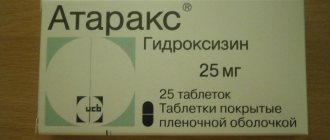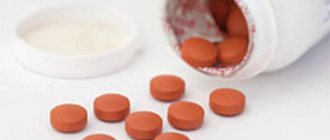Drug analogues
If for some reason the treatment is not suitable, then analogues can always replace the drug “Cipralex”.
Reviews warn that you cannot select a medicine on your own, but only with the help of a doctor, since the drugs are serious. Analogues that can replace Cipralex include:
- "Escitalopram";
- "Easypi";
- Zoloft;
- "Prozac";
- "Lenuxin";
- "Elycea";
- "Selectra"
These drugs, if necessary, can replace Cipralex. Many of them are much cheaper, but are no less effective. They can easily cure both panic conditions and depression. All analogues containing escitalopram oxalate are produced only in tablets and can only be used for oral administration.
Mechanism of action
The main active ingredient escitalopram is an effective remedy for combating depressive disorders.
The medicine belongs to the SSRI .
Drugs of this series block the reuptake of serotonin, which contributes to its increase in the synoptic cleft of nerve cells.
And since the appearance of depression is currently explained precisely by the serotonin theory, that is, in fact, by a deficiency of the neurotransmitter - the hormone serotonin, the use of escitalopram helps to compensate for this deficiency.
Read also: How to have fun without alcohol
The drug “removes” very well the manifestations of bad mood, vital melancholy, total fear, anxiety, and pathological changes in appetite.
Drug interactions
When using the drug simultaneously with MAO inhibitors, the risk of serotonin syndrome and serious anaphylactic reactions increases. Combined use with serotonergic drugs (for example, Tramadol, Macrogol and Sumatriptan) can lead to the development of neurological syndrome and bleeding disorders. Concomitant use with medications that lower the threshold for seizure activity increases the risk of developing symptomatic epilepsy.
The antidepressant enhances the effect of Tryptophan, lithium and magnesium preparations, and neuroleptics. Increases the toxicity of drugs containing plant components (St. John's wort, oregano). Enhances the effect of medications that affect blood pressure. Increases the plasma concentration of Desipramine, Omeprazole and Metoprolol several times.
Cipralex and Amitriptyline
The drug is often prescribed in combination with Amitriptyline for the initial period of pharmacological treatment (the first few weeks). Amitriptyline has the ability to reduce the severity of side effects and facilitates entry into therapy. In addition, Amitriptyline reduces the level of anxiety and phobias, which often develop in the first week of treatment with Cipralex.
In addition, these antidepressants can replace each other if one of these drugs is ineffective, because they are representatives from different pharmaceutical groups. In some cases, one-time medications are used to effectively treat severe and long-term depression or panic attacks. This combination can significantly increase the effectiveness of therapy, eliminate all unpleasant symptoms and provide an acceptable quality of life for the patient.
Contraindications
Pharmacological treatment with Cipralex should be abandoned if:
- hypersensitivity or intolerance to the constituent components of the drug;
- childhood and adolescence (the therapeutic course is not recommended for those under 18 years of age);
- simultaneous treatment with monoamine oxidase (antidepressants) or p imozide (antipsychotic medications);
- acute or chronic renal failure with creatine clearance below 30 ml/min;
- epilepsy , which is not controlled by pharmacological agents.
Cipralex should only be taken under the supervision of qualified medical personnel in one of the following situations:
- non-insulin-dependent diabetes mellitus (for type I, consultation with an endocrinologist is required);
- elderly age;
- cirrhosis , acute or chronic liver failure ;
- tendency to frequent hemorrhages due to insufficiency of the blood coagulation system;
- hereditary and acquired metabolic diseases .
Eye drops
A completely different drug is known under the same name. Having talked about the tablet product, we can also discuss the instructions for using Cipralex drops.
The composition includes ciprofloxacin, which classifies this drug as a fluoroquinolone. The drops effectively suppress bacterial reproduction and also affect the topoisomerase of microorganisms. They affect them not only during active reproduction, but also when they are at rest. The drug also has an effect on gram-positive and negative bacteria.
In addition to ciprofloxacin, the drops also contain hydrochloric acid, EDTA, purified water, as well as benzalkonium chloride and sodium.
This drug "Cipralex", the instructions for use of which will be discussed below, is available in a container with a volume of 5 ml.
Cautions and Limitations
- Incompatible with drugs from the group of MAO inhibitors, as it can provoke the appearance of serotonin syndrome, as well as with anticoagulants, due to the fact that joint use causes changes in the composition of the blood.
- Elderly people should not take the standard dose of the drug; doctors usually prescribe half of it.
- Cipralex is contraindicated in children under 18 years of age; it is used with caution in people with renal and hepatic pathologies.
In what cases is the medicine taken?
Reviews from patients Cipralex are called a good drug. They say that he helped them recover from severe stress. It is a mild and delicate antidepressant. It affects the body gradually and has a prolonged effect.
The drug is indicated for depression of any severity. The medicine is prescribed to patients suffering from panic disorders, both with and without agoraphobia. The medicine is recommended for people prone to social phobia.
The indication for the use of tablets is a persistent anxiety state that is not associated with a specific situation, objects or subjects (generalized anxiety disorder). As a rule, it is accompanied by excessive fussiness, muscle tension, sweating, dizziness and other symptoms. Tablets are prescribed for obsessive-compulsive disorder, regardless of the severity of the disease.
Reviews from doctors and patients about the use of Cipralex
Reviews about it from doctors and their patients help to understand the effectiveness and safety of the drug Cipralex.
Specialists
Bochkareva I., neurologist: “Drugs with escitalopram occupy a strong position in the list of antidepressants. They effectively help with anxiety and depressive disorders, even without the use of other medications. Cipralex is an expensive drug, but very effective. There are minimal side effects when taking it.”
Kholodova N., psychiatrist with 12 years of experience: “Cipralex is an excellent remedy with selective action. I prescribe it for depression, even in severe cases. Most patients tolerate it well. The downside is the high price, and sometimes anxiety can increase (especially in the first days of treatment).”
Pharmakinetics
Absorption is almost complete and does not depend on food intake. The average Tmax in blood plasma is 4 hours after repeated use. The absolute bioavailability of escitalopram is about 80%.
Apparent Vd after oral administration ranges from 12 to 26 l/kg. The binding of escitalopram and its main metabolites to plasma proteins is below 80%.
Escitalopram is metabolized in the liver to demethylated and didemethylated metabolites. They are both pharmacologically active. Nitrogen can be oxidized to the N-oxide metabolite. The main substance and its metabolites are partially released in the form of glucuronides. After repeated use, the average concentration of demethyl and didemethyl metabolites is usually 28–31% and less than 5%, respectively, of the concentration of escitalopram. Biotransformation of escitalopram into a demethylated metabolite occurs mainly through the CYP2C19 isoenzyme. Some involvement of CYP3A4 and CYP2D6 isoenzymes is possible. In individuals with weak activity of the CYP2C19 isoenzyme, the concentration of escitalopram is twice as high as in cases with high activity of this isoenzyme. Significant changes in the concentration of the drug in cases with weak activity of the CYP2D6 isoenzyme were not detected.
T1/2 after repeated use is about 30 hours. Oral clearance is about 0.6 l/min. The main metabolites of escitalopram have a longer half-life. Escitalopram and its main metabolites are excreted by the liver (metabolic pathway) and kidneys; most of it is excreted as metabolites in the urine.
The kinetics of escitalopram is linear. Equilibrium concentration is achieved after approximately 1 week. Average Css, 50 nmol/l (range 20 to 125 nmol/l), is achieved with a daily dose of 10 mg.
Special patient groups
Patients over 65 years of age. In elderly patients, escitalopram is eliminated more slowly than in younger patients. The amount of the substance in the systemic circulation, calculated using the pharmacokinetic AUC indicator, is 50% greater in the elderly than in young healthy volunteers.
Composition of tablets
The medicine "Cipralex" (people's reviews say that the medicine relieves anxiety and helps relieve nervous tension) is produced in the form of tablets, in dosages of 5, 10 and 20 mg.
5 mg tablets are round, convex and covered with a white coating. The tablets are marked “EK”. Tablets of 10 mg and 20 mg are oval and convex on both sides. Equipped with a risk. In the first case, they bear the inscription “E” and “L”, in the second “E” and “N”.
The active ingredient is escitalopram oxalate. In addition to it, the tablets contain additional substances, these are:
- talc;
- microcrystalline cellulose;
- croscarmellose sodium;
- anhydrous colloidal silicon;
- Magnesium stearate.
The pill shell contains: macrogol 400, hypromellose and titanium dioxide, which is also known as E 171.
Antidepressant Cipralex Escitalopram Escitalopramum
Antidepressant: Cipralex Manufacturer: Lundbeck H. / H. Lundbeck (Denmark)
Active ingredient: Escitalopram (Escitalopramum)
Pharmacological action of an antidepressant
Escitalopram belongs to the group of antidepressants-SSRIs (selective serotonin reuptake inhibitors). By inhibiting the reuptake of this neurotransmitter by neurons in the brain, the drug increases its free concentration in the presynaptic cleft (the space between neurons).
This, in turn, has a pronounced antidepressant effect. Escitalopram either does not have or has a very weak ability to interfere with the functioning of most receptors.
One American study conducted in 2006 found that significant improvements occurred in 75% of patients with depression already in the 8th week of taking the drug. Scientists from the University of Gothenburg in Sweden studied the effectiveness of escitalopram for PMS.
Close attention was paid to the main symptoms of PMS: excitability, irritability, tension and feelings of depression. As a result, with a dosage of 10 mg/day, improvement occurred in 86% of women, and in 94% with a dosage of 20 mg/day.
In addition, it was found that escitalopram has a positive effect on the pain symptoms of depression (the subjects felt headaches, pain in the neck, chest, and also in the abdominal area at the time of treatment). Improvement was achieved already in the first week of taking the drug, and a pronounced effect occurred after 14 days of treatment.
Indications for use
- Treatment of depressive episodes (any severity);
- Treatment of patients with panic disorders (including agoraphobia).
Contraindications
Escitalopram should not be taken by children under 15 years of age, pregnant women (including during lactation), or people with hypersensitivity to the components of the drug. In addition, it is prohibited to take escitalopram simultaneously with MAO inhibitors.
Directions for use and dosage
Escitalopram is taken once a day, either with or without food. When treating depressive episodes, the therapeutic dose is 10, maximum 20 mg/day. As a rule, the antidepressant effect begins to appear after 2-4 weeks of taking the drug.
If the desired effect is achieved and the symptoms of depression are completely gone, you should take the drug for at least another six months to consolidate the result. The course of treatment for panic disorders should begin with a dosage of 5 mg/day, followed by an increase to 10 mg/day. If special needs arise, the daily dose can be increased to 20 mg.
Therapy lasts several months, and its maximum effect is achieved on average after 3 months of using escitalopram. For elderly patients (over 65 years of age), the dosage (both recommended and maximum) is half of the above. For mild/moderate renal failure, no dose reduction is made.
Patients with weak activity of the P4502C19 isoenzyme in the first 2 weeks of treatment should take the drug in an amount of no more than 5 mg/day. Depending on the personal reaction to the drug, the dosage can be increased by 2 times.
To avoid withdrawal syndrome, escitalopram should be discontinued gradually, reducing the dose over 2 weeks.
Side effects
As a rule, they occur in the first 2 weeks of taking the drug and disappear over time. The most common side effects include the following: nausea, diarrhea, loss of appetite, constipation, drowsiness (possibly insomnia), increased sweating, weakness and dizziness, decreased sexual desire.
Storage conditions
The storage temperature should not exceed 25 °C, and the drug should not be allowed to fall into the hands of children. Sertraline is also available under the following brand names:
- Selectra
- Lexapro
- Lexam
- Lexamil
- Seroplex
Reviews
We invite you to read the reviews of people who have used Cipralex:
- Sasha. A great drug. Combined with Lamictal, it changed my whole life. There is silence, tranquility, harmony and order at home. My head is not buzzing. The bad thoughts are gone. I feel great! And I wish the same to all those suffering from bipolar and manic depression.
- Olga. Many people have problems in life that drive them into depression and panic. So I had such a misfortune. I had to take the drug Cipralex. I took it in the afternoon because I felt lethargic. Helps very well. Only if I stop taking it does the condition return. Moreover, for some reason I completely stopped being interested in my husband as a man. For me the side effects are more than the benefits.
- Martha. My husband started having panic attacks and depression. We contacted a psychiatrist, he insisted on hospitalization. The husband was against hospitalization. Cipralex just saved us! We started taking 10 mg in the morning. I noticed changes after 10 days. Now 2 months have passed since the start of treatment, everything seems to have improved, my husband’s condition has returned to normal, but we will take the pills for at least 6 months. Depression of a loved one is scary. Thanks Cipralex!
According to doctors involved in the treatment of mental disorders, Cipralex is a modern and highly effective antidepressant. Cipralex is well tolerated, very rarely causing side effects, and this quality is highly appreciated by psychiatrists and psychotherapists, since it allows the drug to be prescribed at home without mandatory hospitalization for 2 to 3 weeks to monitor a person’s behavior in the process of entering treatment.
However, doctors do not consider the drug ideal, since it is not suitable for some people, is poorly tolerated by others, and its effect is not enough for others. Therefore, when prescribing Cipralex, doctors know that it may be ineffective, and therefore are ready to quickly replace it with another drug from the group of antidepressants.
Special instructions for use
Reviews from those taking Cipralex note the need to comply with all doctor’s instructions, and if side effects occur, it is necessary to adjust the dose.
It is not recommended to combine the drug with MAO inhibitors. Cipralex is prescribed two weeks after stopping treatment with these medications.
Antidepressants are not prescribed under the age of eighteen, as there is a risk of suicidal behavior and excessive hostility.
Despite the fact that the drug "Cipralex" does not affect the control of a vehicle or other mechanisms, during treatment it is recommended to refrain from driving vehicles and from activities associated with excessive concentration of attention.
At the beginning of treatment with Cipralex for panic disorder, anxiety may increase. This reaction persists for two weeks. To prevent the occurrence of the disease, in the future it is necessary to start therapy with low doses.
The drug should be discontinued if the patient experiences seizures and manic states
Use the medicine with caution in people with unstable epilepsy, hypomania, or amnesic mania.
When using the medicine in diabetics, changes in blood glucose levels may occur. In this case, insulin dosage adjustment is required.
The likelihood of suicide in people with depression remains until they feel better and the negative symptoms disappear. Therefore, when treating with antidepressants, the behavior of such patients should be monitored, since there is always a risk of worsening the clinical development of the disease and the manifestation of suicidal tendencies
This precaution must also be observed when treating other psychological diseases.
The use of Cipralex during pregnancy (third trimester) can negatively affect the development of the newborn baby. Babies whose mothers took antidepressants experienced tremors, poor sleep, anxiety, sleep disturbances, and hypertension. Such disorders often occur due to serotonergic effects, as well as during abrupt drug withdrawal.
Comments
You did the wrong thing by not waiting at least 1-2 weeks after stopping Cipralex.
It is quite possible that after the specified period everything would have returned to normal. But you can do it differently, namely, if systemic dizziness appears after stopping treatment with Cipralex, resume taking the minimum dose of Cipralex, for example, 2.5 mg daily or even 2.5 mg every other day.
Having been successfully treated in this way for 1-2 months, you can repeat the attempt to completely discontinue the drug.
Alice, no, the fact that you took Cipralex again is not tragic. It’s just possible that these are just manifestations of withdrawal syndrome, which would disappear on their own in a week or two. If such attacks of fear occur during the 1-2 weeks of the transition period, you can stop them with atarax or buspirone, which is sold in Ukraine.
Keep me updated and don't worry.
| quote: |
| but addiction to pills is not) |
You are wrong, read above.
You should go see a therapist to get all your pharmacophobic crap knocked out of you. This is your main problem that needs to be solved now. All other problems will be solved perfectly by medications that help you very well.
| quote: |
| unclear) |
I simply explained everything in the message sent at 22:20. Read it carefully.
I have been taking escitalopram for quite some time, but I have a very advanced and severe disease. Unfortunately, this drug solves only part of my problems (now I will complicate the drug regimen, escitalopram alone is not enough for me). I even envy you a little that these same pills in monotherapy solve all your problems. This is great, you should be happy. Swallow the pill - and live life to the fullest, like all normal people. Why doom yourself to torment by refusing medications based on some false principle?
| quote: |
| and then you get used to it and you have to take something else! |
Tolerance does not develop to SSRIs; they are not benzodiazepines. Benzodiazepines are a different matter, even if they help at first, taking them for a long time is most often pointless, because the effect often fades over time.
| quote: |
| I was just being treated for drug and alcohol addiction many years ago. |
There is no need to mix everything together. These are different things, SSRIs do not have narcotic potential.
| quote: |
| my grandmother, ugh ugh, almost lived 82 years without pills |
Do you know how many of her peers died as children due to diseases that today are easily treated with antibiotics, but previously millions died from them?
| quote: |
| Posted by Nord_n MojoHead |
To put it mildly, your osteopath was minding his own business, and showing all sorts of books was very stupid of him. There are a lot of side effects described there, because this is an imported drug, and there it is supposed to be described that way, but look at their possible percentage of occurrence! And besides, at the beginning of treatment, the symptoms of the disorder usually worsen, so it is necessary (not always) to cover the blood pressure with trunks for the first weeks. And if you have PA, I think you shouldn’t treat them with an osteopath, they can be treated with the same success by an ophthalmologist, for example... but there is a possibility that PA can arise from a pinched nerve in the cervical spine? Just recently I read this somewhere - I can’t remember where.
Read also: Reasons why a young man’s hands are shaking
then definitely go to an osteopath - chiropractors and other massage therapists will not help here. or they will help. but very weakly and not for long.
Well, and the fact that she removes crises VERY well - how to explain it?
| quote: |
| But, there is a possibility that PA can occur from a pinched nerve in the cervical spine? |
There is no evidence for such a theory. The reasons for PA are different. Pinched nerves cause completely different symptoms (for example, pain at the pinched site). There is no connection with PA, otherwise science would have known this a long time ago; it would not be difficult to establish if such a connection actually existed.
| quote: |
| Well, and the fact that she removes crises VERY well - how to explain it? |
Placebo effect (suggestion). But this effect may not be permanent, so.
Run away from your osteopath and go to a psychotherapist, you are a suggestible person, you have a good chance of coping even without medications (although medications may come in handy at some stage).
The osteopath is simply fooling you (the reasons are clear - you are his client and source of income), and Nord_n quite rightly noted that he is going far beyond his competence.
In general, osteopathy is such a murky area, in many ways it is banal quackery, presenting something like deep massage (gentle manual therapy) as a panacea for almost everything. Their approach has nothing to do with evidence-based medicine. This is part of alternative medicine that accepts its provisions without evidence, such as homeopathy or ritual dances of a shaman.
Even diseases of the musculoskeletal system should be treated primarily by orthopedic doctors, sometimes classical manual therapy, massage, exercise therapy, etc. are included.
| quote: |
| Message from Dmitriy_spb I don’t understand why you are asking about Cipralex withdrawal syndrome if you yourself took it and have already stopped? I don’t see the logic, because you know the answer to this question. |
If you are also interested in someone else's experience: I literally just (a couple of days ago) lowered the dose from 20 mg/day to 10 and didn’t feel anything at all. No withdrawal symptoms. These are not trunks. The ones that break when you lower them.
Cipralex is an antidepressant intended for the treatment of many mental disorders: depression, phobias, panic, anxiety, insomnia.
Side effects
If you do not take the drug in accordance with the prescription, Cipralex can negatively affect a person’s condition. If the dosage is exceeded, a headache usually occurs. Less commonly, a person has to deal with the following conditions:
- Hyperemia.
- Nausea.
- Itching.
- Fear of light.
- Burning.
- Swelling of the eyelids.
- Sore eyes.
- Rhinitis.
- Tearing.
- Feeling of dry mouth.
- Keratitis.
- Deterioration of vision, loss of sharpness.
- Feeling of presence of foreign bodies in the eyes.
- The appearance of spots on the cornea.
Superinfection may also occur. This is a process as a result of which one cell infected with a virus is later coinfected with another strain.
How to take Cipralex
The method of administration, dosage and duration of drug therapy with Cipralex should be prescribed by the attending physician, depending on the severity of the patient’s condition, age, weight and gender, the presence of concomitant acute and chronic diseases, and the need to use other pharmacological drugs. In addition, it is necessary to take into account the patient’s predisposition to allergic reactions to medications.
The drug is prescribed once a day, regardless of food intake. For depression, the drug should be taken at a dose of 10 mg. Depending on the patient’s individual response to the drug, its amount is increased to the maximum dose (20 mg per day). The antidepressant effect develops several weeks after the start of drug therapy. To achieve optimal clinical effect, drug treatment with Cipralex should last at least 6 months.
When does Cipralex start working?
The clinical antidepressant effect develops 2-4 weeks after the start of pharmacological therapy with the drug. The maximum effect of treatment for agoraphobia, panic attacks, akathisia syndrome, anxiety, irritability and other emotional disorders is achieved approximately 3-4 months after starting to use the drug.
After the disappearance of manifestations of psychotic pathologies, it is necessary to take the drug for several months (the exact period is determined individually by the attending physician) to consolidate the effect obtained and prevent the development of antidepressant withdrawal syndrome. In some cases, the duration of treatment can be a year or more.
Cipralex withdrawal syndrome
Clinical withdrawal syndrome develops after stopping the use of the drug, due to the fact that the structures of the central nervous system need some time to rebuild the functioning of synapses without constant exogenous maintenance of the concentration of serotonin at a constant active form. It takes one to three weeks to set up the independent functioning of the brain. Antidepressant withdrawal syndrome is manifested by the following symptoms:
- increased nervous excitement;
- insomnia;
- hyponatremia;
- increased tendency to bleed;
- sudden mood swings;
- uncontrollable fear;
- decreased visual acuity;
- dizziness;
- disturbances of consciousness;
- nausea;
- tachycardia;
- heart rhythm disturbances (arrhythmia).
Remeron
Psychiatrists at the Yusupov Hospital have many years of experience in treating drug withdrawal syndrome, alcohol, nicotine and other addictive substances. Patients who have been prescribed Remeron most often turn to specialists for help with the question of how long it takes for withdrawal symptoms to begin after stopping the medication.
Manifestations of the body's reaction to the abolition of antidepressants and the return of signs of the disorder may occur within a week. Psychiatrists with many years of experience in treating mental disorders and disorders when treating patients with antidepressants, to exclude withdrawal syndrome, gradually reduce the dosage and recommend that the patient avoid excessive physical activity and eating solid foods.
Use during pregnancy and breastfeeding
There are limited data on the use of escitalopram during pregnancy.
If escitalopram was continued during late pregnancy, especially in the third trimester, the newborn should be monitored. If escitalopram was continued until delivery or was stopped shortly before delivery, the newborn may develop withdrawal symptoms.
If the mother takes SSRIs/SNRIs in late pregnancy, the newborn may develop the following side effects: respiratory depression, cyanosis, apnea, seizure disorders, temperature fluctuations, feeding difficulties, vomiting, hypoglycemia, hypertension, muscle hypotonia, hyperreflexia, tremor, increased neuro-reflex excitability, irritability, lethargic sleep, constant crying, drowsiness, poor sleep. These symptoms may occur due to withdrawal symptoms or serotonergic effects. In most cases, such complications occur within 24 hours after birth. Escitalopram should only be taken during pregnancy when absolutely necessary and after a careful benefit/risk assessment. Evidence from epidemiological studies suggests that use of SSRIs during pregnancy, especially later in pregnancy, may increase the risk of developing persistent pulmonary hypertension in the newborn.
Escitalopram is expected to be excreted in breast milk, therefore breastfeeding is not recommended during treatment with escitalopram.
Recommendations for admission
All of them are listed in the instructions for use of Cipralex. Feedback from patients, which will be discussed a little later, is mostly positive, which once again convinces of the effectiveness and efficiency of the drug being studied. But in order for it to give the desired result, you must follow the rules of administration.
The tablets can be taken regardless of meals. The recommendations are as follows:
- To achieve an antidepressant effect, loading doses must be used for 2-4 weeks. The daily dose is 10 mg. In the next six months, it is necessary to carry out maintenance therapy aimed at consolidating the results obtained.
- For panic disorders, therapy should begin with 5 mg per day. Gradually the dose is increased to 10 mg - the doctor will tell you when it needs to be done. It all depends on the individual characteristics of the body. In some cases, the amount can be increased to 20 mg per day. The maximum effect is achieved after three months of use. However, therapy can be extended up to six months.
- In patients with hepatic or renal insufficiency, the maximum dose is 5 mg. It is not recommended to increase it, however, if the desired effect cannot be achieved, then you have to resort to this. In such cases, the dose is increased to 10 mg.
Under no circumstances should you increase the amount of the drug you take on your own. Even an overdose is possible. Such cases are known in clinical practice, and they manifest themselves with the following symptoms:
- Confusion and darkened consciousness.
- Convulsive seizures.
- Impaired fine motor skills and tremors.
- Agitation, manifested by strong emotional arousal, accompanied by a feeling of anxiety and a strong need to constantly move.
- Arrhythmia type tachycardia.
- Significant changes in the electrocardiogram - depolarization occurs, the ventricular complex expands.
- Depression of the respiratory function of the respiratory system.
- Hypokalemia.
- Metabolic acidosis.
Unfortunately, the drug does not have a specific antagonist or antidote. Therefore, an overdose is treated by providing the patient with palliative and symptomatic care.
First of all, the stomach is washed, which helps to evacuate all the remnants of the drug that have not had time to be absorbed. And then oxygenation and monitoring of body systems is provided.
Similar drugs
Having studied the instructions for using Cipralex, it would also not hurt to consider analogues. Of course, if possible, it is better to purchase the original drug. Otherwise, it is better to opt for the following drugs, similar in composition and action:
- "Esciathlopram." Its price starts from 550 rubles. The antidepressant effect usually develops 2-4 weeks after the start of therapy. The most pronounced effect is observed in the 3rd month of use.
- "Easypi." This product can be found in pharmacies at a price of 600 rubles. Similar to Escitalopram.
- "Selectra" It is a foreign analogue, manufactured in Iceland - the previous two drugs are produced in Russia. The price of Selectra starts from 750 rubles.
- "Elycea". The cost of this product, produced in Slovenia, starts from 590 rubles. Sold by prescription.
- "Lenuxin". Produced in Poland, its price starts from 650 rubles.
- "Fluoxetine." A very cheap drug that can be found at a price of 35 rubles. It is prescribed for prolonged severe clinical depression. It is inexpensive, but can cause many side effects, including impaired consciousness and the development of anorexia.
- "Moclobemide". A powerful selective inhibitor that has also proven itself well. However, its price is even higher than that of Cipralex - it ranges from 2,400 to 2,700 rubles.
All of these drugs have the same effect as Cipralex. They are based on the same active ingredients, and therefore the recommendations regarding administration and pharmacological activity are identical. The same applies to indications, contraindications, side effects and drug interactions.
Indications
The instructions for Cipralex state that this drug effectively complements complex conservative therapy for the following conditions:
- Prolonged depression of any severity.
- Generalized anxiety syndrome.
- Social phobias.
- Affective insanity.
- Obsessive-compulsive disorder. It is also called obsession with an idea.
- Panic disorders, especially those that are explained by the fear of open spaces - agoraphobia.
- Anxiety experienced by the patient when he is among people.
- Obsessive-compulsive neurosis.
It has proven itself especially well in the treatment of these conditions in young patients. Most quickly copes with panic and anxiety-depressive disorders.











